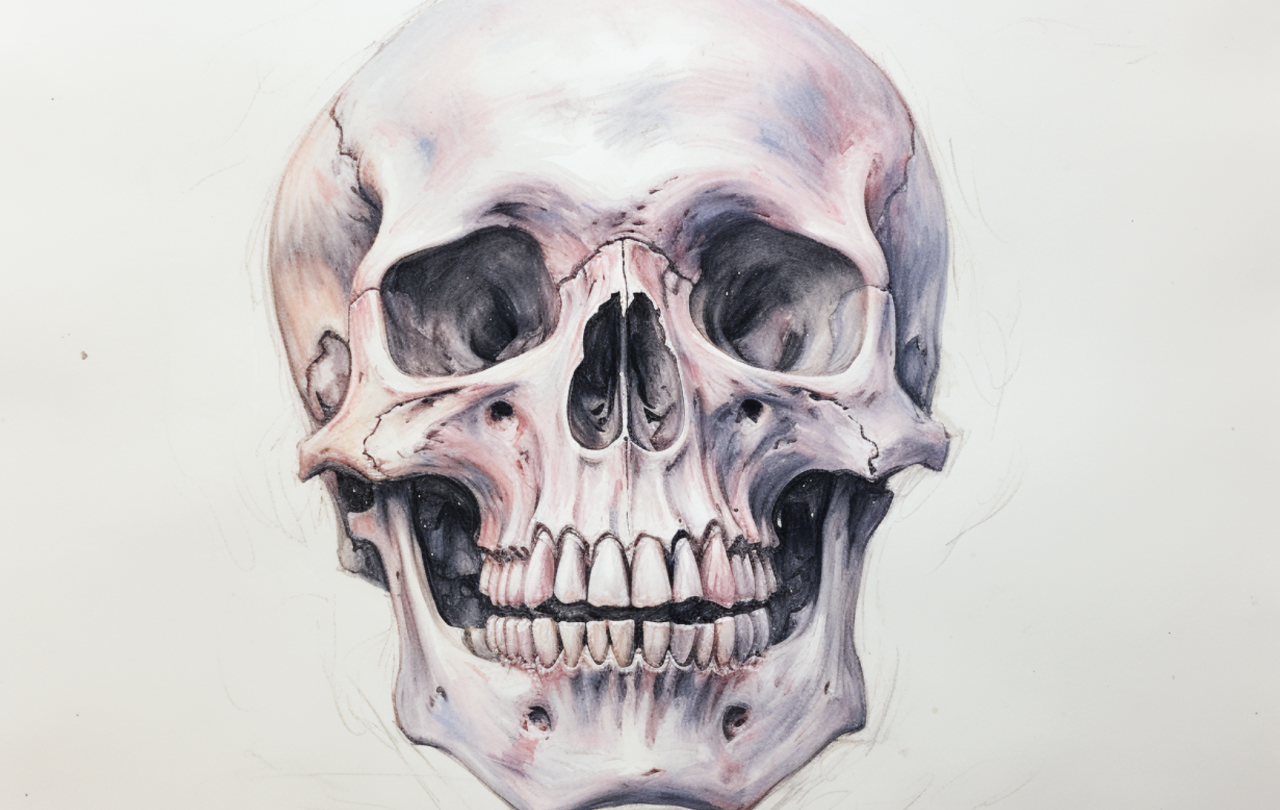
The sin of pride takes us into a sea of puzzles. Its choppy waters of contradictions and cross-cultural currents can be difficult to navigate. Is pride the worst sin as learned Christian moralists have sternly proclaimed from Augustine to Aquinas and C.S. Lewis? Or should we applaud many popular forms of 21st century pride?
Pride drives parents to encourage their children; students to strive for better results, football fans to cheer on their team and soldiers to die for their country. Black Pride and Gay Pride have made millions of previously ostracised people more understood and more accepted, rolling back yesterday’s tides of bigotry and prejudice.
How can the apparently “good” pride in these modern categories be squared with the condemnation from ancient Greek philosophers and Christian teachers down the ages that hubris or individual pride are not just bad sins but the personification of evil?
“These are deep waters, Watson!” as Sherlock Holmes might have said to his assistant. But they become easier to fathom if the most toxic element in bad pride is diagnosed. It is egotism with a capital E, perhaps better identified as rampant self-centredness.
Many walks of life tempt us towards self-centredness, but some professions seem to attract more egotists than others. In this article I will concentrate on those who make their chosen careers in the arena of public life – particularly politics.
I now describe my downward spiral of this crash as a descent involving defeat, disgrace, divorce, bankruptcy, and jail.
I can write about this notorious minefield of pride with some inside knowledge because this was where I spent decades of my life “climbing towards the top of the greasy pole” as Disraeli described political ambition.
It was where I had a spectacular fall from grace, plummeting from rising Cabinet Minister to imprisoned convict. I now describe my downward spiral of this crash as a descent involving defeat, disgrace, divorce, bankruptcy, and jail. The ingredients in this royal flush of crises were caused by pride.
Without recognising the fault line in my personal and political character (a common failing in many prideful people) I was climbing well on Disraeli’s greasy pole in the 1990s.
I was in my fifth term as an elected Member of Parliament. I had held two portfolios as a Minister of the Crown. One was Minister of State for Defence and the other was the powerful Cabinet post of Chief Secretary for the Treasury. To make my head swell further I was quite frequently being tipped to be the next leader of the Conservative Party and as a potential successor to Prime Minister John Major.
The political graveyards are littered with the long-forgotten corpses of ex-future Prime Ministers. So, these transitory labels should have made a wise man humble.
In fact, it did quite the reverse. A combination of what Shakespeare in Hamlet calls ‘the insolence of office’ and in Macbeth ‘vaulting ambition, which o’erleaps itself’, gave me a surfeit of hubris. Pride is the deadliest of sins, and I was bursting with it. Politically I began to believe that I could walk on water. I took myself far too seriously, especially when I was made the target of a campaign by the Guardian.
It does not matter now what the Guardian said in their attacks, because all feelings of resentment about them have long since left me. Suffice it to say that, in a long series of articles, they made a number of allegations against me, some of which were true, some of which were untrue, and all of which were given a strongly negative spin. In the face of this campaign I was full of prideful anger and went for the journalists’ jugular. I initiated a lawsuit for defamation and announced my libel action in a ferocious television speech which contained the peroration,
‘I will cut out the cancer of bent and twisted journalism with the simple sword of truth’.
These were recklessly insensitive words of pride which came back to haunt me.
Where was I as a Christian when I was riding high as a politician?
To put it simply, I called myself a Christian without actually being one. I was strong on the externals. I went to church regularly; I supported Christian causes and was a church warden at St. Margaret’s Westminster – the Parliamentary church. However, I do not think I had understood the simple truth that being a Christian has little to do with external appearances and everything to do with an internal commitment to Christ’s teachings.
I probably bore a disturbing resemblance to the Pharisee in the Bible’s story of the Pharisee and the Tax Collector who go up to the temple to pray. Even if I did not boast about my external piety quite as loudly as the Pharisee did, the humility of the Tax Collector was far removed from me. I was certainly not saying ‘God be merciful to me, a sinner’, nor was I doing the will of the Father, especially when it came back to the libel case. In order to win it, I did something that was against the will of the Father: I told a lie.
It did not seem at that time a terribly important lie, at least in relation to the lies I was accusing others of telling about me. It was a lie about who paid a £900 hotel bill of mine at the Ritz Hotel in Paris while I had been a government minister. I told this lie. I told it on oath in my evidence in court. To my eternal shame, I even got my wife and daughter to back me up with witness statements supporting my lie. But then my opponents ambushed me in the middle of the trial with clear documentary evidence that I had told a lie on oath. My credibility as a witness was shattered.
I had to withdraw the libel case. And within twenty-four hours my whole life was shattered. The rising Cabinet Minister had impaled himself on his own sword of truth with explosive and apocalyptic consequences.
I was prosecuted for perjury, pleaded guilty at my trial in the Old Bailey and by June 1999 I was in a prison van heading for HMP Belmarsh to serve an 18-month prison sentence.
Having proved the truth of the old saying “Pride comes before a fall” I had plenty of time to reflect on how it happened, how it could have been avoided, and how I might prevent this deadly sin from resurfacing in my life.
Compliance has replaced conscience as the arbiter of what is right or wrong.
One key discovery was that pride had turned me into a self-obsessed loner. Despite an outward carapace of gregariousness and friendliness, I confided in hardly anyone and made myself accountable to no-one. Graham Tomlin hit this nail on the head in his 2007 book The Seven Deadly Sins: And How To Overcome Them when he wrote:
“Pride is the most isolating of sins………..the ultimate end of pride is loneliness”.
Once one has recognised and acted upon this wisdom, the chances of recognising and defeating the sin of pride, when it tempts you, are infinitely higher.
I used to believe in an old line of verse by Rudyard Kipling:
“Down to Gehenna, or up to the Throne,
He travels the fastest who travels alone”.
Now I think differently. Conquering one’s ego is no easy task. But if you make a determined effort to confide in and make yourself accountable to carefully selected friends, family members, colleagues or prayer partners you will build, with their help, strong defences to the sin of pride.
A Christian faith can be a powerful bulwark in strengthening these defences. I had never heard of, let alone participated in prayer groups, or had a prayer partner or found a spiritual director until after my fall from grace.
God has moved in his mysterious ways to bring these friends and protectors into my life to such good effect that I am now a contented priest and prison chaplain. Yet pride can still lurk as a dangerous enemy even among practising Christians. Pastoral ministry and preaching have their pride traps but accountability and self-awareness can help to avoid them.
If I ever receive a compliment on a sermon, I promptly recall the following story about John Newton the author of Amazing Grace.
One day when he had been preaching in his home church of St Mary Woolnoth, in the City of London, an exuberant member of the congregation fell at his feet as he came down the pulpit steps and gushed:
“What a brilliant sermon Mr Newton! What a great sermon!”
John Newton responded:
“Thank you sir!
The Devil himself told me that a few moments ago”.
The Devil, as he surveys the 21st century landscape of what used to be called the Seven Deadly Sins, must be rather pleased. These days serious sinning is often equated with minor rule breaking. If you can get away with it, you will not be seen by contemporary society as a sinner. Compliance has replaced conscience as the arbiter of what is right or wrong.
Yet pride remains stubbornly out there on its own as a different and deeper category of sin.
Don’t worry about the distinction between “good” and “bad” pride. They are easy to separate because the former are non-egotistical while the latter are toxically absorbed with the self. The French language helpfully has two different words - fiertè and orgueil to make the division clear.
Orgueil or self-centred, self-absorbed pride is what C.S. Lewis rightly identified as “the great sin……….the upmost evil……….the complete anti-God state of mind”
Perhaps it takes a poacher who has been caught in this sin to recognise the magnitude of its destructiveness on all other relationship and on one’s personal character and soul. Turning gamekeeper in order to defeat pride means spiritual discipline, accountability and prayer. Even so, the struggle against pride will always continue.





